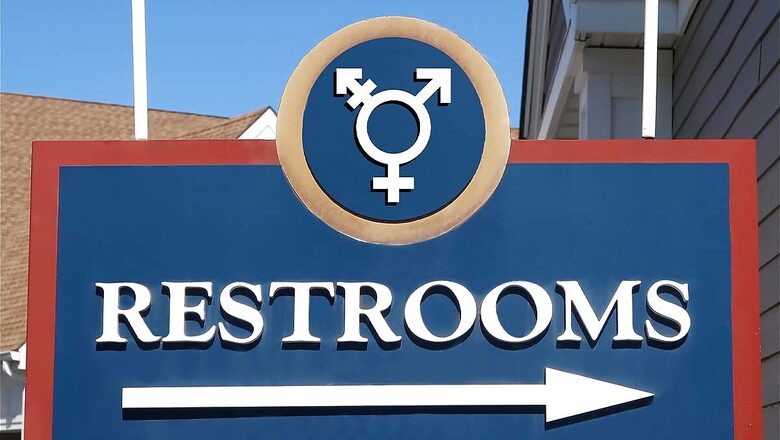
views
In a world where acceptance and inclusion should be the norm, it is disheartening to confront the stark reality faced by LGBTQ+ students in educational institutions. The findings of a 2021 survey conducted across India by the Indian Institute of Management Ahmedabad, Boston Consulting Group, and Pride Circle serve as a poignant reminder of the challenges the community still endures.
Shockingly, 64% of LGBTQ+ students have experienced discrimination or ridicule, with 92% enduring mocking, 59% enduring bullying, and 26% facing social exclusion. Perhaps most troubling is the fact that 36% of these students choose to keep their true selves hidden, afraid to reveal their identities due to the lack of LGBTQ+ friendliness on campus. This, in a setting that is supposed to be forward looking, liberal, and meant to open our minds to new experiences. If this is what happens in universities, will the LGBTQ+ experiences in our workplaces be any different?
While the public dialogue slowly evolves towards normalisation of the entire gender and sexual orientation spectrum, what we need are concrete actions. When our universities construct gender neutral toilets, they move past lip service. They create a physical space that signals their acceptance of the gender spectrum, as a whole. It becomes a powerful statement of affirmation, and a potent signal to those who practise discrimination.
When the same thing happens across workplaces, movie theatres, stadiums, event venues, public transport hubs, toll stations, police stations, courts, hospitals and everywhere else, we affirm ourselves as a society that is welcoming, accepting and respectful towards all of us. And we show the haters that we won’t stand beside them.
The humble toilet becomes so much more.
Understanding The Need for Inclusive Toilets
Inclusive restrooms are restrooms that are accessible and welcoming to people of all gender identities and expressions. They are also known as gender-neutral, unisex, or all-gender restrooms. Inclusive restrooms have single stalls or multiple stalls with privacy partitions. They are labelled with signs that indicate they are for everyone, such as “Restroom”, “All-Gender Restroom”, or “Gender-Inclusive Restroom”.
For LGBTQ+ students, there are three immediate benefits:
- Reduced anxiety and stress: Transgender, non binary and intersex students can finally use the ‘right’ toilet. The men’s toilet is the wrong toilet. So is the women’s toilet. The gender neutral toilet creates a space where they are welcome, and their presence is unquestionable. They feel more comfortable and safe. No more worrying about going to the wrong bathroom, no more worrying about who they will meet there, or how they will react, or whether they are going to be verbally or physically attacked.
- Promoting a sense of belonging: When LGBTQ+ students feel like they belong, they are more likely to be engaged in school and to feel supported by their peers and teachers. This can lead to better academic outcomes and a more positive overall experience at school.
- Preventing harassment and discrimination: Inclusive restrooms can help to prevent harassment and discrimination against LGBTQ+ students. When students know that they are safe and respected, they are less likely to be targeted for harassment or discrimination.
Inclusive restrooms pave the way for a more inclusive society. When students from various backgrounds and identities learn in a supportive environment, it imbibes empathy, understanding, and acceptance. Furthermore, these inclusive practices in educational institutions are likely to transcend beyond the walls of academia into workplaces and public spaces.
Examples of Inclusive Restrooms in India
In India, while inclusive restrooms may not be widespread, there are inspiring examples of educational institutions taking proactive steps. One notable case is the Indian Institute of Technology (IIT) Bombay, where gender-neutral restrooms were installed on campus as early as 2017. This initiative was championed by Saathi, an LGBTQ+ student support group at IIT Bombay, showcasing the power of student-led advocacy in fostering inclusivity.
Another institution leading the way is the Tata Institute of Social Sciences (TISS) Mumbai, which also introduced gender-neutral restrooms on its campus in 2017. The effort was spearheaded by Queer Collective, an LGBTQ+ student group at TISS Mumbai, emphasising the importance of student-driven initiatives in creating safe and inclusive spaces for all.
These examples highlight the transformative impact of collaborative efforts in making inclusive restrooms a reality. By involving various stakeholders and fostering a sense of community, educational institutions can take significant strides towards building environments that respect and accommodate diverse gender identities.
Today, several Indian universities are recognizing the need for gender-neutral toilets. Institutions such as IIT Delhi have taken the initiative to inaugurate gender-neutral washrooms on their campuses. In fact, IIT Delhi now boasts 14 such facilities. Additionally, Tezpur University in Assam and the National Academy of Legal Studies and Research (NALSAR) in Andhra Pradesh have also embraced gender-neutral washrooms, recognizing the importance of providing an inclusive environment for all students. NALSAR goes a step further by adopting a gender-neutral trans policy and the recognition of a gender-neutral title, “Mx,” on student’s certificates, paving the way for other institutions to follow.
By championing inclusivity and embracing initiatives driven by student-led organisations and institutional policies, these universities are paving the way for a brighter, more equitable future.
Key Strategies for Implementing Inclusive Restrooms
Creating inclusive restrooms in educational institutions requires a collaborative effort from various stakeholders: administrators, teachers, students, parents, and community members. Here are some steps that can be taken to create inclusive restrooms:
Embrace Institutional Policies:
Administrators, teachers, students, parents, and community members can establish robust policies that champion gender-inclusive restrooms. This involves the conversion of existing facilities or the construction of new ones. Staff and students alike can undergo comprehensive training, and learn how to create and maintain an environment brimming with understanding and respect.
Foster Consultation and Collaboration:
The voices of LGBTQ+ students and faculty are vital during the planning process. By involving them, we ensure that the restrooms truly meet their unique needs (particularly around safety) and expectations. Their insights and perspectives pave the way for genuine inclusion and a sense of ownership.
Design with Compassion and Accessibility:
We must prioritise privacy and security, for all. Lockable single-stall facilities, accessible to all individuals regardless of gender identity, installation of panic buttons, using always-on lighting, and other design considerations ensure that the toilet feels (and is) safe. Additionally, the toilets can be designed to also cater to the needs of differently-abled students ensuring easy accessibility for all.
Cultivate Awareness and Uphold Regular Maintenance:
Enlightening workshops and seminars go a long way in transforming traditional mindsets. We all know how much of a sea-change our views undergo, when we get to really know someone who we are guilty of ‘othering’, however covertly. Workshops create safe spaces for people to mingle, interact and learn from one another. These educational endeavors nurture empathy, deepen understanding, and give us an appreciation for the intricate challenges faced by the LGBTQ+ community.
In this transformative journey, Harpic, a brand that has nestled itself in the hearts of Indian households as a symbol of cleanliness, emerges as a beacon of change. Recognizing the paramount importance of both inclusivity and cleanliness, Harpic wholeheartedly embraces the diversity of our beautiful nation, including the LGBTQ+ community, by creating products that cater to everyone’s needs.
Moreover, Harpic understands that unity amplifies the impact of change. Three years ago, Harpic joined hands with News18 to initiate the remarkable Mission Swachhta aur Paani. This extraordinary endeavour surpasses mere cleanliness; it embodies love, acceptance, and unwavering support for one another. By advocating for the transgender and non-binary community, Mission Swachhta aur Paani shines a light on the indispensable significance of inclusive public toilets.
The Road Ahead: Continuing the Journey to Inclusivity
The journey to inclusivity is a continuous one. There will always be work to do. While the inclusion of gender neutral toilets in public spaces has begun, it is vital to maintain dialogue with the LGBTQ+ community, assess the utility of these facilities, and fine-tune as needed. Inclusive restrooms transcend physical space; they symbolise the recognition and respect of diversity.
With resolute policies, engagement with the LGBTQ+ community, adept design, education, and collaborations such as those with Harpic and ‘Mission Swacchta aur Paani’, we hold the keys to crafting educational spaces that exude support and respect for all. Let’s collectively march ahead on this path, and enrich our society through diversity that uniquely defines us.
Join us here, to learn how you can play a part in this national conversation.















Comments
0 comment